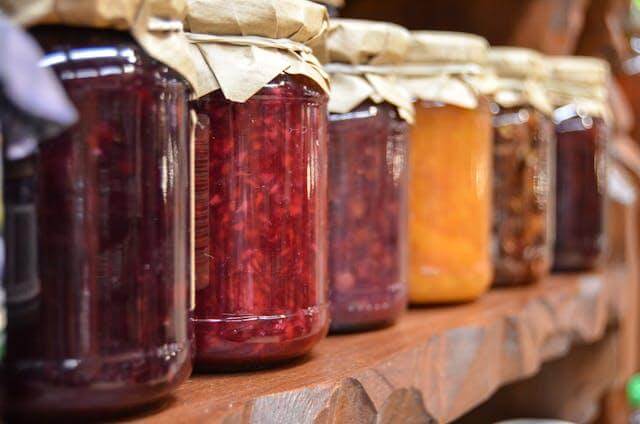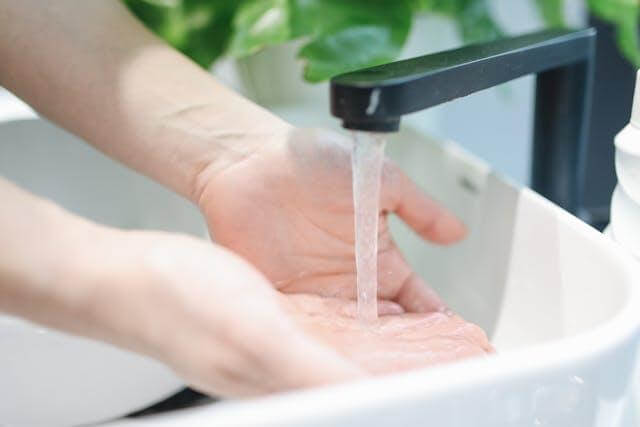TL;DR: Why You Should Never Move Food Items Without Checking For Infestation
Inspect every item for pests before moving food, especially during a move. Even sealed containers can hide bugs, mold, or larvae. One contaminated product can turn into a full-blown infestation in your new kitchen. Check, clean, and store smartly to avoid costly health hazards and pest problems.
Pests often hide deep inside food packages or containers. Eggs, larvae, or mold may go unnoticed at a glance. Above all, relocating infested food helps pests spread from one location to another. Insects like pantry moths, beetles, or weevils can reproduce rapidly, making small issues worse. Even one contaminated item can affect an entire pantry. Move food items only after a careful inspection of each product. Discard anything that appears suspicious. Thorough checking helps prevent infestations in clean environments. In short, ignoring this step invites avoidable trouble.
Related Links
- Moving Into A Pest-Free Home: What To Check Before You Buy
- Top Considerations For Pest Management When Moving Your Business
- What You Need To Know About Lawn Pests Before Moving
- Lawn Care For New Homeowners: A Complete Guide
Common Signs That Your Food Might Be Infested
Unusual signs often point to a problem hiding in your food. Packaging with tiny holes may suggest insect activity. Strange smells or discoloration can signal contamination or decay. Dry goods like flour, rice, or cereal may contain cockroaches and other bugs or larvae that blend into the texture. Web-like residue in the corners of bags or inside jars is another sign of infestation.
Pantry pests leave behind these threads while feeding or laying eggs. Examine all containers closely, including unopened ones. Look under lids and in corners where pests might hide. With this in mind, discard anything suspicious immediately. Infected items should not be kept, even if the signs seem minor. Keeping only safe food protects your storage space from spreading pests.

Avoid Bringing Unwanted Guests Into Your New Kitchen
When packing up your kitchen for a move, it’s easy to overlook a small but costly mistake: moving food items without checking them for pests. Even sealed products can hide infestations if the packaging has been damaged or compromised. If those items make it into your moving boxes, you risk carrying bugs or rodents into your new pantry. What seems like a minor oversight can lead to food contamination, expensive cleanup, and a stressful start in your new home.
Before boxing anything, inspect all dry goods, spices, and opened containers. Toss anything questionable. Wipe down storage bins and pack food in airtight containers to block future problems. Taking time to check as you go protects your supplies and also helps you settle into a cleaner, safer kitchen from day one.
How to Properly Inspect Food Before Transporting
Inspecting food carefully before a move prevents pests from spreading to your new space. Open every package and inspect it visually. Look for holes, clumps, or webbing—these can be early signs of infestation. Sift through grains, flour, and dried goods using a clean spoon or mesh strainer. Smell items for mustiness or foul odors that suggest mold or decay.
Of course, examine jars and boxes closely, especially around lids, seams, or corners where insects hide. Even sealed products should be checked for damage. Avoid moving expired or opened goods without full inspection—clean containers and bins before packing. Use hot, soapy water or a vinegar solution to remove any residue. Wipe down shelves and storage areas as well. Pests often travel on the surfaces you overlook. Make sure everything is dry before repacking. A little effort before the move helps keep your new kitchen safe and pest-free.

Best Practices For Disposing Of Infested Food
Disposing of infested food must be handled with care to avoid spreading pests. Bag and seal infested food before disposal to contain insects. Use thick trash bags and tie them securely. Take the trash out immediately to avoid attracting more pests indoors. Do not compost infected items, as eggs or mold can survive and spread through the compost pile. Check nearby containers and shelves for signs of contamination. Wipe surfaces to remove residues.
Then again, professional pest control might be needed if the problem is widespread. Clean all utensils and storage bins that came into contact with the spoiled food. Sanitize hands and tools afterward to avoid carrying pests to other areas. If you plan to move food items, make sure everything is clean and safe. Disposal done the right way helps stop infestations from growing or returning.
People Also Ask (PAA)
Q: Can pests live in sealed food containers?
A: Yes, if the seal is weak or compromised, insects can still enter or survive inside.
Q: What’s the fastest way to tell if food is infested?
A: Look for webbing, holes, foul smells, and discolored or clumped textures—especially in dry goods.
Q: Should I throw away everything if I find one infested item?
A: Not always—but you must inspect nearby products and containers thoroughly.
Q: Why shouldn’t I compost infested food?
A: Because pest eggs or mold spores can survive and spread through compost, leading to new infestations.
How To Store Food To Prevent Future Infestations
Storing food correctly helps prevent pest problems before they start. Use airtight glass or BPA-free plastic containers to keep bugs and moisture out. Avoid using thin or damaged packaging for long-term storage. Freeze bulk goods briefly before placing them in the pantry—this helps kill any hidden eggs and larvae. Store grains, flours, and cereals in cool, dry areas with proper airflow.
In like manner, avoid keeping food near heat sources or under direct sunlight. Inspect your pantry every few weeks for signs of infestation or spoilage. Check expiration dates and dispose of old or questionable items right away. Label everything with the date of purchase to track freshness. Label dates and rotate stock frequently to ensure older products are used first. This small habit can help avoid waste and keep storage areas pest-free.
Protecting Your Family’s Health And Home
Unchecked infestations can pose real health risks to everyone in your household. Food contaminated by insects or mold may trigger allergic reactions or digestive problems. Small pests can carry bacteria from one product to another. On the other hand, clean food handling prevents illness and helps avoid larger pest issues later.
Children and pets are more vulnerable to exposure, especially if they come into contact with spoiled food or droppings. Storage areas should stay dry, organized, and free from clutter to reduce hiding spots for pests. Wash your hands after handling pantry items, and clean containers regularly. Take time to inspect groceries before putting them away. Peace of mind comes from preventative habits that stop infestations before they start. In order to protect your home, always inspect food first, even if it looks safe. These small checks help keep your kitchen and family protected every day.

Key Takeaways
- Pantry pests can hide inside sealed food containers.
- Common signs include holes in packaging, webbing, and odd smells.
- Transporting infested food can introduce pests to your new home.
- Inspect all dry goods before packing—don’t skip unopened items.
- Dispose of infested food carefully and avoid composting it.
- Store food in airtight containers and monitor pantry freshness.
- Protect your family by developing clean handling and inspection habits.
Why Checking Before You Move Food Items Matters
Always check for signs of infestation before you move food items. Ignoring this step risks spreading pests, damaging your home, and harming your health. Proper storage, routine checks, and clean handling can prevent serious problems. Protect your kitchen, pantry, and family with smart habits. A few minutes of care today can save you stress and cost tomorrow.
FAQ: Why You Should Never Move Food Items Without Checking For Infestation
Q: How often should I check my pantry for pests?
A: Inspect every 2–4 weeks, especially in warmer months or if you’ve had past infestations.
Q: Do I need to wash food containers before moving them?
A: Yes—clean all containers and shelves with hot soapy water or vinegar before packing.
Q: What are the safest containers for long-term food storage?
A: Airtight BPA-free plastic or glass containers are ideal for keeping pests and moisture out.
Q: Can pantry pests make you sick?
A: Yes—some pests spread bacteria or mold that can cause allergic reactions or stomach issues.
Be Sure To Check Out Some Of Our Services:
Termites — Rodents — Ants — Bed Bugs








